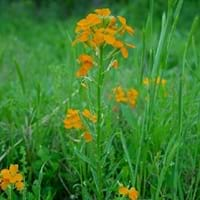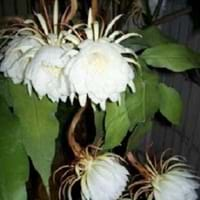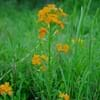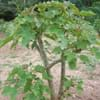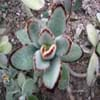Life Span
Annual and Perennial
Perennial
Type
Tender Perennial
Cactus or Succulent, Flowering Plants
Origin
Southern Europe, Mediterranean
Mexico
Types
Not Available
Not Available
Number of Varieties
Not Available
Habitat
gardens, Grassland, Prairies
Tropical rainforest
USDA Hardiness Zone
7-9
9-11
Sunset Zone
4, 5, 6, 14, 15, 16, 17, 18, 19, 20, 21, 22, 23, 24
H1, 21, 22, 23, 24
Habit
Mat-forming
Weeping
Minimum Width
Not Available
Flower Color
Light Yellow
Red, Orange, Magenta, Orange Red
Flower Color Modifier
Bicolor
Not Available
Fruit Color
Green
Purple, Red
Leaf Color in Spring
Gray Green
Not Available
Leaf Color in Summer
Gray Green
Not Available
Leaf Color in Fall
Gray Green
Not Available
Leaf Color in Winter
Light Green
Not Available
Leaf Shape
Linear
Long linear and narrow
Plant Season
Spring, Summer, Fall, Winter
Spring, Summer, Fall, Winter
Sunlight
Full Sun, Partial Sun
Partial Sun, Partial shade
Type of Soil
Loam, Sand
Loam, Sand
The pH of Soil
Neutral, Alkaline
Neutral
Soil Drainage
Well drained
Well drained
Bloom Time
Spring, Late Spring, Early Summer, Summer, Late Summer, Early Fall
Spring, Late Spring, Early Summer, Summer
Tolerances
Drought
Not Available
Where to Plant?
Container, Ground, Pot
Ground, Pot
How to Plant?
Seedlings, Stem Cutting
From Rhizomes, Leaf Cutting, Stem Planting
Plant Maintenance
Medium
Medium
Watering Requirements
Allow soil to be completely dry in between waterings, Water Deeply, Water less during winter
Keep the ground moist but not water-logged, Water occasionally
In Summer
Lots of watering
Lots of watering
In Spring
Moderate
Moderate
In Winter
Average Water
Average Water
Soil pH
Neutral, Alkaline
Neutral
Soil Type
Loam, Sand
Loam, Sand
Soil Drainage Capacity
Well drained
Well drained
Sun Exposure
Full Sun, Partial Sun
Partial Sun, Partial shade
Pruning
Cut or pinch the stems, Do not prune during shooting season, Prune if you want to improve plant shape, Prune prior to new growth, Remove deadheads
Remove damaged leaves, Remove dead branches, Remove dead leaves
Fertilizers
All-Purpose Liquid Fertilizer
All-Purpose Liquid Fertilizer
Pests and Diseases
fungus, Insects, Red blotch
Red blotch
Plant Tolerance
Drought
Drought
Flower Petal Number
Single
Single
Foliage Texture
Fine
Bold
Foliage Sheen
Matte
Not Available
Attracts
Bees, Birds, Butterflies
Hummingbirds
Allergy
Skin irritation
no allergic reactions
Aesthetic Uses
Beautification, Showy Purposes
Beautification, Showy Purposes
Beauty Benefits
Not Available
Not Available
Environmental Uses
Air purification
Air purification
Medicinal Uses
No Medicinal Use
Not Available
Part of Plant Used
Whole plant
Whole plant
Other Uses
Showy Purposes
Showy Purposes, Used as Ornamental plant
Used As Indoor Plant
No
Yes
Used As Outdoor Plant
Yes
Yes
Garden Design
Alpine, Container, Edging, Foundation, Groundcover, Mixed Border, Rock Garden / Wall
Container, Hanging Basket, Houseplant, Rock Garden, Wall, Tropical
Botanical Name
Erysimum capitatum
DISOCACTUS ackermannii
Common Name
Sanddune Wallflower, Western Wallflower, Prairie Rocket
Orchid Cactus
In Hindi
रेत टिब्बा Wallflower
आर्किड कैक्टस
In German
Sanddüne Wallflower
Orchid cactus
In French
Sable Dune Wallflower
Cactus Orchid
In Spanish
Duna de arena Wallflower
cactus orquídea
In Greek
Sand Dune Wallflower
ορχιδέα κάκτος
In Portuguese
Duna Wallflower
Orchid cactus
In Polish
Wydma Wallflower
Orchid kaktus
In Latin
Sand Dune Wallflower
Orchid cactus
Phylum
Magnoliophyta
Embryophyta
Class
Magnoliopsida
Magnoliopsida
Order
Brassicales
Caryophyllales
Family
Brassicaceae
Cactaceae
Genus
Erysimum
Disocactus
Clade
Angiosperms, Eudicots, Rosids
Angiosperms, Core eudicots, Eudicots
Tribe
Not Available
Hylocereeae
Subfamily
Not Available
Cactoideae
Number of Species
Not Available
Not Available
Season and Care of Sanddune Wallflower and Orchid Cactus
Season and care of Sanddune Wallflower and Orchid Cactus is important to know. While considering everything about Sanddune Wallflower and Orchid Cactus Care, growing season is an essential factor. Sanddune Wallflower season is Spring, Summer, Fall and Winter and Orchid Cactus season is Spring, Summer, Fall and Winter. The type of soil for Sanddune Wallflower is Loam, Sand and for Orchid Cactus is Loam, Sand while the PH of soil for Sanddune Wallflower is Neutral, Alkaline and for Orchid Cactus is Neutral.
Sanddune Wallflower and Orchid Cactus Physical Information
Sanddune Wallflower and Orchid Cactus physical information is very important for comparison. Sanddune Wallflower height is 30.50 cm and width 30.50 cm whereas Orchid Cactus height is 15.20 cm and width Not Available. The color specification of Sanddune Wallflower and Orchid Cactus are as follows:
Sanddune Wallflower flower color: Light Yellow
Sanddune Wallflower leaf color: Gray Green
Orchid Cactus flower color: Red, Orange, Magenta and Orange Red
- Orchid Cactus leaf color: Not Available
Care of Sanddune Wallflower and Orchid Cactus
Care of Sanddune Wallflower and Orchid Cactus include pruning, fertilizers, watering etc. Sanddune Wallflower pruning is done Cut or pinch the stems, Do not prune during shooting season, Prune if you want to improve plant shape, Prune prior to new growth and Remove deadheads and Orchid Cactus pruning is done Remove damaged leaves, Remove dead branches and Remove dead leaves. In summer Sanddune Wallflower needs Lots of watering and in winter, it needs Average Water. Whereas, in summer Orchid Cactus needs Lots of watering and in winter, it needs Average Water.
